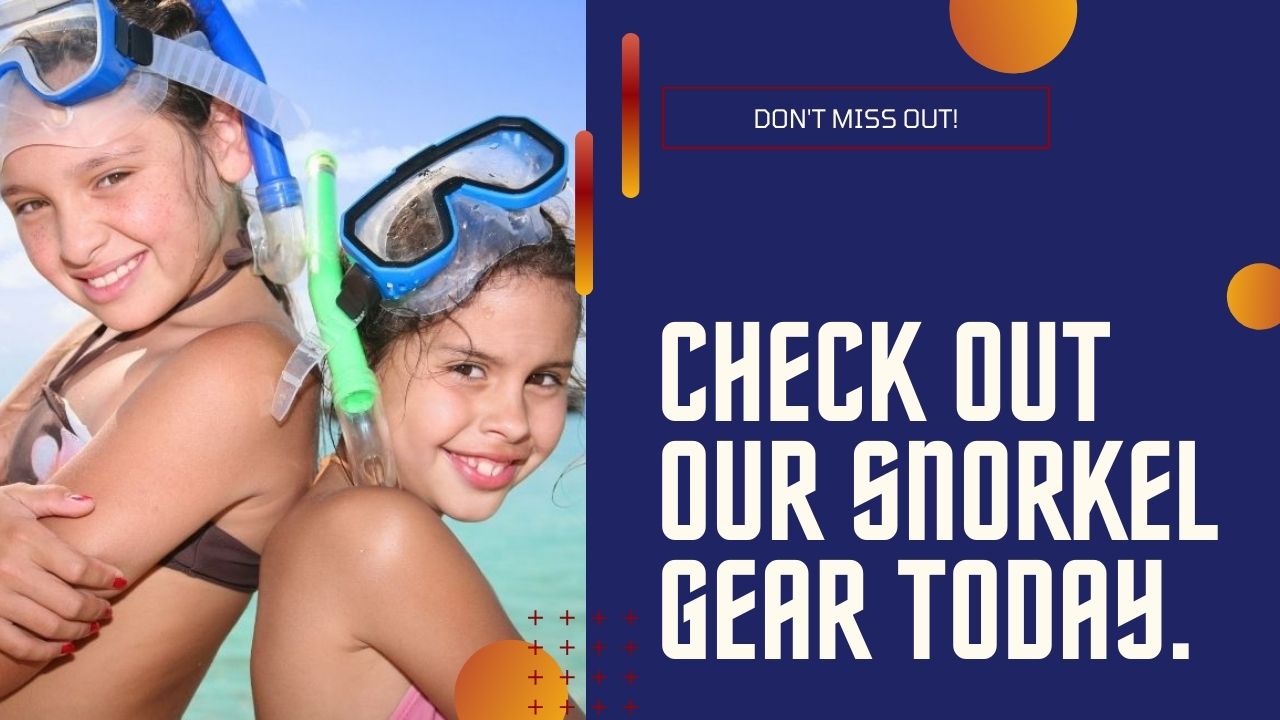You have 0 product(s) in your cart.
Abyss Scuba Diving
Snorkeling Vs Scuba Diving: Uncovering The Best Adventure For You
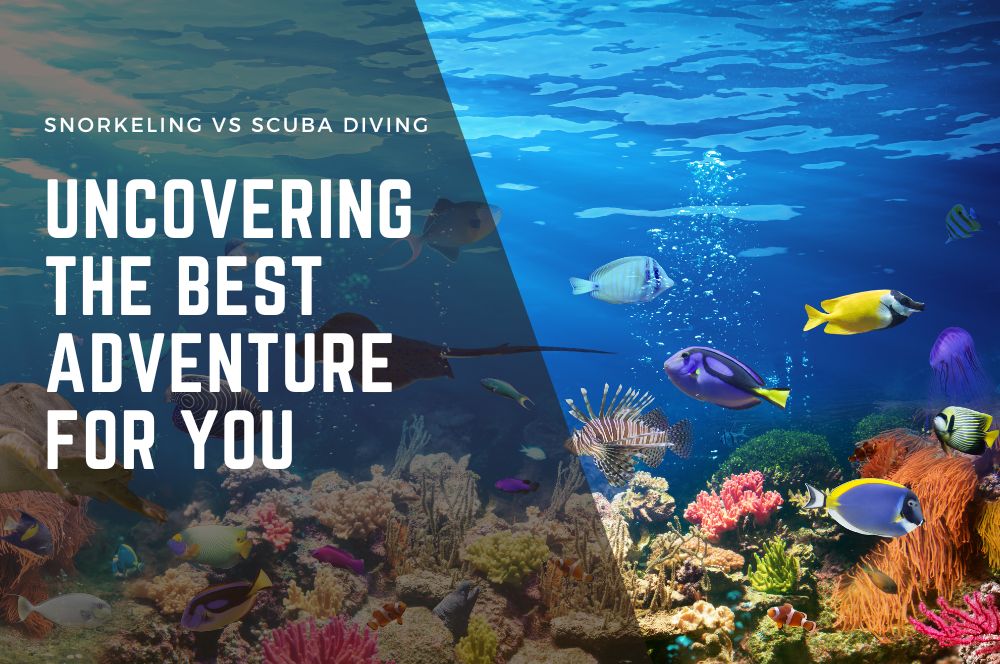
Snorkeling vs Scuba Diving: Uncovering the Best Adventure for You
Snorkeling vs scuba diving: which underwater adventure is best for you? If you’re debating, this guide is your starting block. Snorkeling promises a hassle-free surface swim with fish and corals, requiring just a mask, snorkel, and fins. Scuba diving invites you to fully immerse yourself in the ocean’s depths, equipped with regulators and air tanks, but also demands certification and training. Ready to discover the thrills of the shallows versus the wonders of the deep? Let’s dive in.
Key Takeaways
-
Snorkeling requires minimal, easy-to-use equipment and is suitable for all ages, making it an accessible and family-friendly activity to explore shallow underwater environments.
-
Scuba diving offers deeper exploration with structured training and complex equipment, allowing for adventures that reach up to recreational dive limits of 40 meters for certified divers.
-
Matching the underwater encounter to personal preference, fitness, and adventure level determines whether snorkeling or scuba diving is the right choice for an individual.
Equipment Essentials: Snorkeling vs Scuba Diving
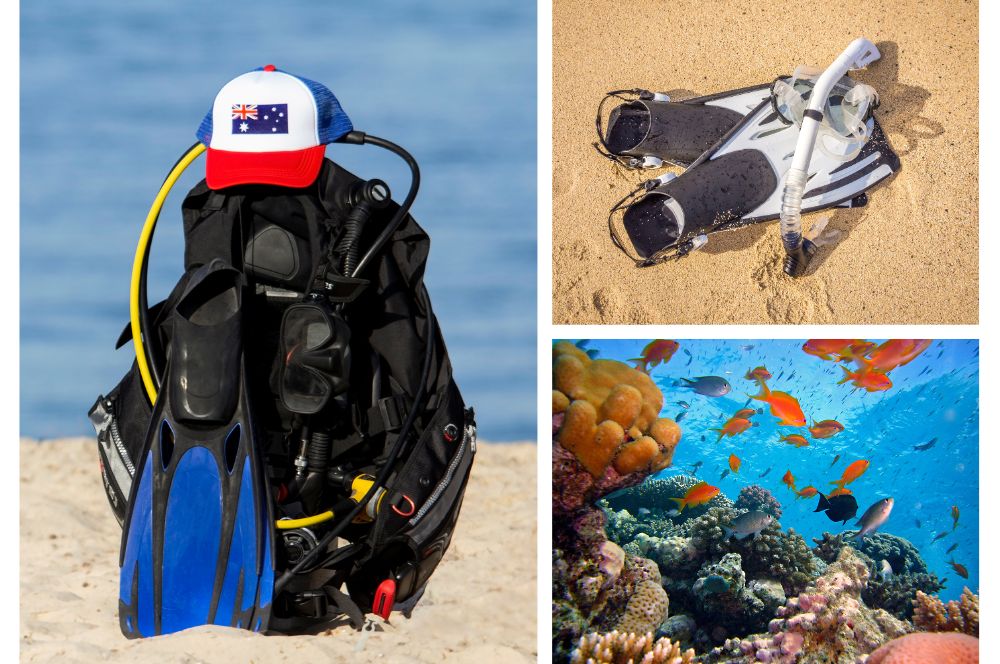
The selection of appropriate gear is a critical aspect of underwater exploration, as important as the decision to dive in. Snorkeling offers a gentle introduction to the aquatic realm, with snorkeling gear that epitomizes simplicity and ease. The essential snorkeling gear includes:
-
Mask: to provide a clear view underwater
-
Snorkel: to allow you to breathe while your face is submerged
-
Fins: to help you move through the water more efficiently
Imagine slipping on a mask, biting gently on a snorkel, and propelling yourself with a pair of fins—this is the essence of snorkeling, a dance on the water’s surface that requires minimal equipment and preparation. With a quick view, you’ll be ready to explore the underwater world.
In contrast, scuba diving is akin to preparing for a spacewalk, with a comprehensive array of equipment that includes:
-
Basics
-
Regulators
-
Buoyancy control devices
-
Air cylinder
This gear, complex and life-sustaining, equips you to breathe underwater and to navigate the vertical expanse of the ocean’s layers.
Snorkeling Gear
Snorkeling serves as an easy entry point to the marvels beneath the surface, with equipment designed for effortless use and enjoyment. The basic snorkeling toolkit includes:
-
Snorkeling mask: your window to the underwater world, protects your eyes and nose while providing a clear view of vibrant marine life.
-
Snorkel: evolving in design, now offers comfort and efficiency, lessening the intrusion of water and the strain on your jaw as you breathe in the ocean’s embrace.
-
Fins: complete your basic toolkit, enhancing your swimming prowess and allowing you to glide with the currents or hover over delicate reefs.
And for those venturing into cooler waters or seeking protection from the sun, additional equipment such as wetsuits and rash guards can be added to provide a layer of warmth and safety, ensuring your snorkeling session is as comfortable as it is enchanting.
Scuba Diving Equipment
When you embark on a scuba diving journey, you get equipped with advanced gear designed to help you master the depths. The regulator becomes your lifeline, a marvel that delivers air from the scuba tank to your lungs, no matter the depth. The Buoyancy Control Device (BCD</a>) is nothing short of essential; it’s your underwater control center, allowing you to hover, ascend, or descend with the press of a button.
Weights, often overlooked, play a crucial role in your aquatic ballet, countering your body’s buoyancy to keep you rooted in the oceanic panorama you’ve come to explore. Scuba diving gear, with its intricacies, isn’t just about breathing and buoyancy—it’s about preparing to engage fully with the undersea universe, a commitment that demands attention to detail and an understanding of the environment you’re about to enter.
Family-Friendly Fun: Snorkeling and Scuba Diving for All Ages
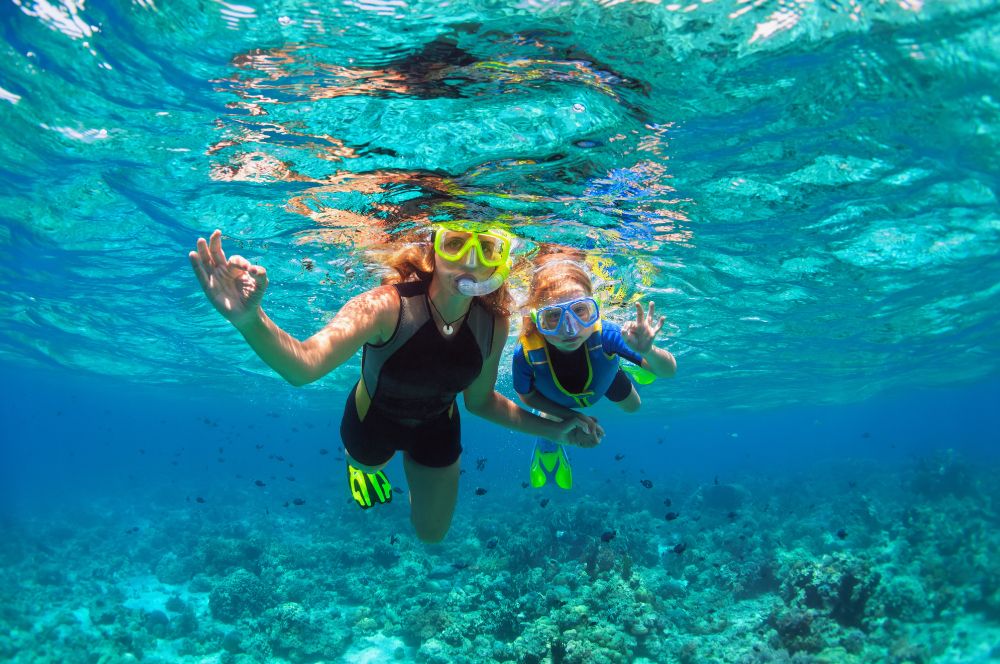
The ocean’s allure is wide-ranging, beckoning explorers from all age groups to marvel at its splendors. Snorkeling, with its ease and accessibility, opens the door to the whole family, allowing even the youngest members to peer beneath the surface into the aquatic theatre. However, even as we embark on these thrilling escapades, we must not overlook the vital role of water safety training in safeguarding our loved ones from potential risks involved in aquatic activities.
Scuba diving, while typically welcoming older children, offers a structured pathway to underwater discovery, demanding a certain level of maturity and skill but rewarding with experiences that can shape young minds and inspire future marine advocates.
Kids and Snorkeling
Introducing a child to snorkelling is like handing them a key to a treasure trove of wonder. The ideal age to begin is often debated, but comfort in the water is paramount, and for many, the journey starts around the age of five. Confidence is nurtured in familiar waters, where swimming can be practiced playfully on the beach or in the calm embrace of a pool.
When it comes to gear, a snug fit is key to ensuring safety and enjoyment, with masks and snorkels that cater to smaller faces and fins that won’t rub or chafe tender skin. And while practice makes perfect, starting in the bathtub or a local pool can help build the skills and confidence needed to take the snorkelling adventure to the open ocean.
Not to forget, a life vest stands as a guardian, a buoyant companion that offers peace of mind as young ones explore the shallows, dipping their heads beneath the waves to glimpse the ocean’s treasures with their head submerged.
Kids and Scuba Diving
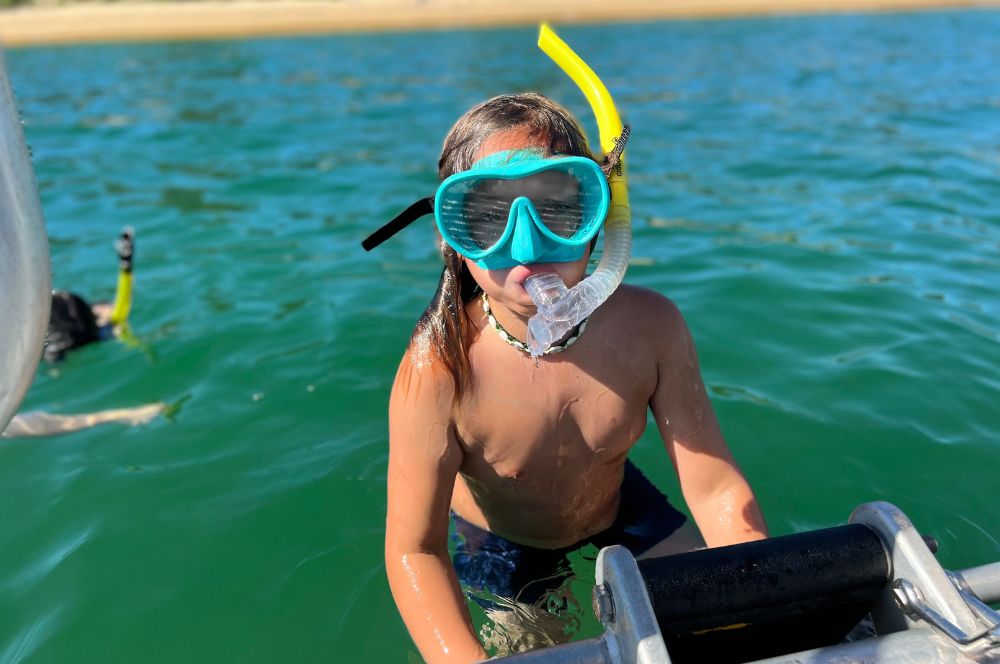
For the more adventurous souls, scuba diving presents an opportunity to delve deeper, but it comes with its own set of age-related considerations. The threshold stands at ten years, a marker of both physical and mental readiness to engage with the equipment and the environment that scuba diving demands. Certification for young divers is a rite of passage, one that introduces them to the responsibilities and joys of the underwater realm. Junior Open Water Divers, as they are known, learn the ropes under the watchful eyes of trained professionals or guardians, adhering to depth limits that ensure safety while fostering a sense of achievement and wonder.
The benefits of diving for kids reach beyond the thrill of the dive; it’s an education in marine ecology, a catalyst for confidence, and perhaps the beginning of a lifelong passion for the mysteries that lie beneath the waves.
Depths of Exploration: Comparing Snorkeling and Scuba Diving
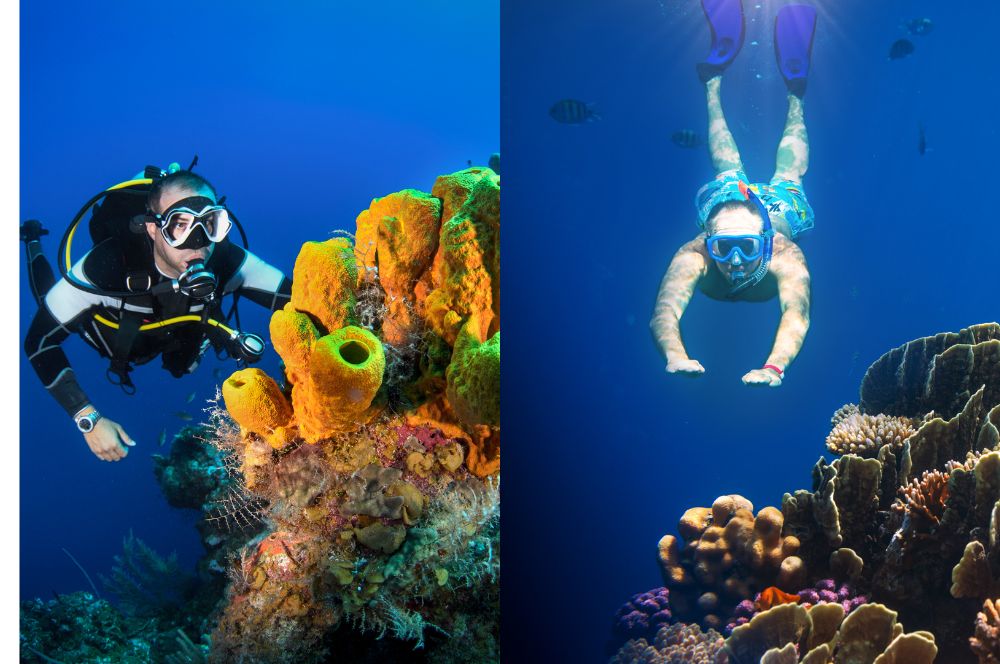
The charm of the deep-sea is irresistible, but what’s the limit to how far you can descend beneath the waves? Snorkeling, by nature, is a dance upon the surface, a way to witness the ocean’s splendor without fully submerging into its depths. The shallows, often no more than 5 meters deep, are where snorkelers find their paradise, basking in the clarity and color that thrive in the sunlit waters.
In contrast, scuba diving offers a ticket to the abyss, inviting divers to breach the surface tension and sink into a world where time slows and life flourishes in forms both strange and spectacular.
Snorkeling Depths
Snorkeling is as much about floating as it is about fleeting dives beneath the surface. The ideal range for snorkelers lies between 1 to 3 meters, where the ocean reveals itself in vibrant hues and teeming life. Yet, this isn’t just about depth—it’s about visibility, light, and the palette of the seabed, all of which contribute to the snorkeler’s experience.
While some snorkelers may venture deeper, the joy of snorkeling often lies in:
-
the ease of floating above it all
-
occasionally diving down to meet a curious fish or inspect a colorful coral
-
always within a breath’s reach of the air above, making snorkelling a delightful experience.
Scuba Diving Depths
Scuba diving, in comparison, embraces the depths with open arms. Certified divers often explore up to 18 meters below the surface, a realm where sunlight begins to wane and the ocean’s secrets grow more profound. Beyond the reach of snorkelers, divers can descend to 40 meters, touching the edges of the recreational diving limit, where the world is not just seen but felt in the pressure of the deep and the silence of the vast.
For those with experience and training, the ocean’s depth holds no bounds, with epic tales of dives reaching hundreds of meters into the blue, each meter a story, each dive an odyssey into the heart of the oceanic world, a world as mysterious and captivating as the earth itself.
Preparation and Planning: Spontaneity vs Structure
When the sea’s call resonates within you, should you impulsively dive in or meticulously plan your dive? Snorkeling is the embodiment of spontaneity, a pursuit that can be embraced on a whim with minimal gear and preparation. It’s the perfect companion for those impromptu beach days when the water’s call is too strong to resist.
Conversely, scuba diving demands forethought and a certain reverence for the ritual of preparation. From assembling the regulator to checking the BCD and planning your dive, scuba diving is an exercise in structure and safety, ensuring each dive is as secure as it is exhilarating.
Learning Curve: Snorkeling and Scuba Diving Training Requirements
Be it gliding on the water surface or delving into the deep-sea, every aquatic activity demands the mastery of a particular skill set. Snorkeling can often be grasped in less than half an hour, making it a welcoming gateway to the wonders below. There’s no need for certification, but a brief orientation can go a long way in enhancing your experience and ensuring your safety.
Scuba diving, on the other hand, is a different beast entirely. Here, the learning curve is steeper, requiring at least a few days of dedicated training to confidently navigate the underwater landscape with your life-supporting gear.
Top Destinations for Snorkeling and Scuba Diving
Picture yourself snorkeling amidst the crystal-clear waters of the Great Barrier Reef or navigating through the awe-inspiring underwater landscapes of the Red Sea. These are not just dreams but destinations where the ocean’s beauty unfolds in unparalleled ways. From the jellyfish of Palau to the manta rays of the Maldives, the world is dotted with locations that beckon both snorkelers and divers alike.
Whether it’s the shark-filled channels of the Bahamas or the volcanic seascape of the Azores, there’s a perfect spot for every underwater enthusiast to discover new depths of beauty and excitement.
Choosing the Right Adventure for You
So, how do you make a choice between snorkeling amidst the fishes or diving into the profound depths? It’s a choice that hinges on personal preference, fitness levels, and perhaps most importantly, how you envision your encounter with the sea.
Snorkeling appeals to those who favor simplicity and affordability, offering an immediate connection with the marine world with minimal fuss. Scuba diving, though, calls to the adventurers willing to invest in their passion, both in terms of time and money, for the reward of immersing themselves in the ocean’s depths.
Consider your own desires, capabilities, and the kind of aquatic adventure you yearn for, and let that guide your choice between the tranquility of snorkeling and the thrill of scuba diving.
Summary
Whether you choose to snorkel atop the water’s glittering surface or dive deep into its mysterious depths, both snorkeling and scuba diving offer unique and unforgettable encounters with the marine world. From the simplicity of snorkeling gear to the complexities of scuba equipment, from family-friendly fun to the vastness of oceanic exploration, your underwater adventure awaits. Remember, the sea is a canvas of endless possibilities, and with the right preparation, training, and destination, you’re sure to find the aquatic journey that resonates with your soul.
Frequently Asked Questions
At what age can children start snorkeling and scuba diving?
Children can start snorkeling as early as five years old, but they should be at least 10 years old to begin scuba diving certification courses. Always consider their comfort and swimming ability before starting.
Do I need a certification to snorkel?
No, you don't need a certification to snorkel, but it's recommended to have some basic orientation or training to ensure a safe and enjoyable experience.
How deep can I go with snorkeling and scuba diving?
You can enjoy snorkeling at depths of 1 to 3 meters for better visibility and easier breathing, while scuba diving allows for deeper exploration, with a recommended limit of 40 meters for recreational divers. So, if you're looking to go deeper underwater, scuba diving is the way to go!
What should I consider when choosing between snorkeling and scuba diving?
Consider your physical abilities, budget, and the type of underwater experience you prefer. Snorkeling is more spontaneous and budget-friendly, while scuba diving requires more planning, training, and can be more expensive. Choose based on these factors.
What are some top destinations for snorkeling and scuba diving?
Some top destinations for snorkeling and scuba diving include the Great Barrier Reef, the Red Sea, Palau, the Maldives, and the Bahamas, all offering rich marine life and beautiful underwater landscapes.
Recent Posts
